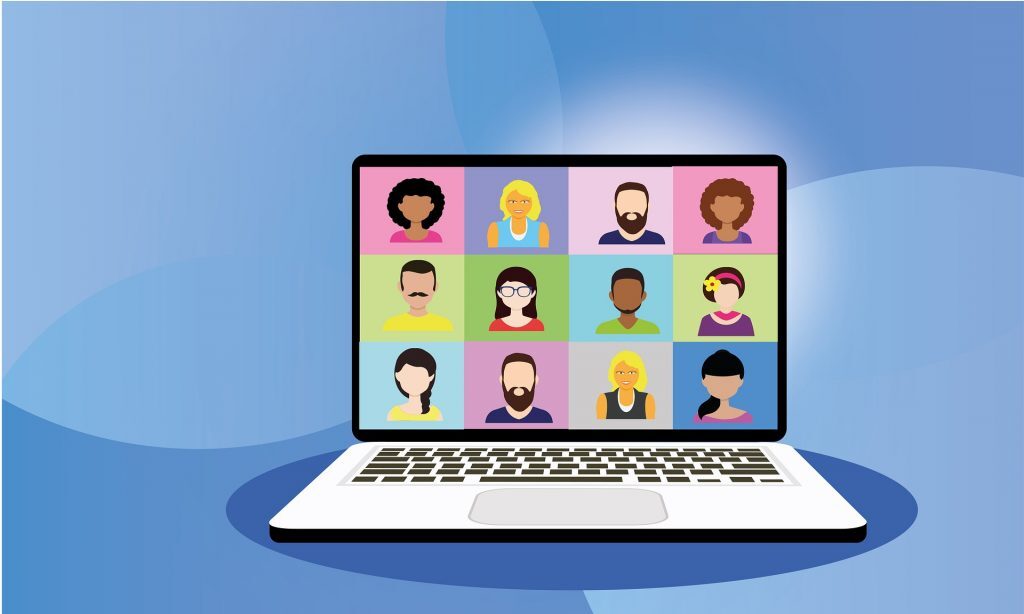Feeling exhausted at the end of a long day of video-conferencing? Do your back, shoulders and mind ache after a Zoom meeting marathon? Do you miss the morning chit chat at the office’s water fountain and the face-to-face interaction with your favourite colleague?
If you answered yes to any of these questions, believe me, you’re one of millions suffering from Zoom fatigue, named after the popular video-conferencing app.
Recent figures in fact indicate that four in 10 remote workers report suffering from a sense of physical and mental exhaustion that accompanies the prolonged screen engagement and the lack of face-to-face interaction during the workday.
Women reportedly suffer even higher levels of stress during video-conferencing relative to men. This is possibly the result of mirror anxiety, a phenomenon whereby seeing oneself in the mirror — or digitally as in the case of videocalls — triggers greater self-scrutiny.
With workplaces becoming increasingly virtual, my focus on understanding human cooperation with machines and systems contributes to understanding how human cognition responds to our increasingly virtual world.
Drastic effects
In March 2020 — when the World Health Organization declared the COVID-19 pandemic — there was a sudden and drastic impact on work habits. Employers rushed to shift their workforce to teleworking globally, and even industries that historically relied on manual labour started pushing for more unmanned automation.
Albeit the rush toward teleworking and virtual learning has its advantages — think, for example, of how much shorter commutes are — it does not come without costs.
The clinical community has widely acknowledged the threat that Zoom fatigue poses to mental health, and a Google search for DIY remedies often turn up a handful of somewhat useful yet largely unproven interventions, like packing daily videocalls together in one reserved time slot, or using headset rather than the computer’s built-in mic.
Scales of measurement
Zoom fatigue has become so prevalent that a group of scientists from the University of Gothenburg and Stanford University developed the Zoom Exhaustion and Fatigue Scale. This scale might be used as an assessment tool to better understand the prevalence and magnitude of this condition.
The specific causes of Zoom fatigue are still unknown. Contributing factors include the worker’s urge to comply with proper “Zoom etiquette” and the impetus to multitask during video calls. This phenomenon, which is also common in distracted driving, is motivated by our tendency to stay active following boredom or perceived lulls in job performance.
Together, these circumstances lead to high levels of mental demand in the workplace which not only reduces productivity, but it also leads to greater muscle exertion and poor task performance.
Countering the effects
Research on Zoom fatigue is growing, but little is known on how to fight it or, even better, prevent it.
Human-machine interaction studies suggest that tracking one’s eyes or physiological state can help monitor the teleworker’s fluctuation in cognitive demand. This information can then be used to develop real-time Zoom fatigue detection algorithms, and alert the remote worker about its onset.
While the long-term effects of the COVID-19 pandemic on mental health are still unknown, it is not too far-fetched to anticipate that should this issue not get promptly addressed, it will add onto the mental and physical burden that COVID-19 will have had on teleworkers, and the population as a whole.
As workplaces become more virtual and machine operations more remote, the need for a more cross-disciplinary approach that encompasses cognition, engineering and human kinetics is needed, now more than ever.
- is Assistant Professor, Human Kinetics, University of Windsor
- This article first appeared on The Conversation




